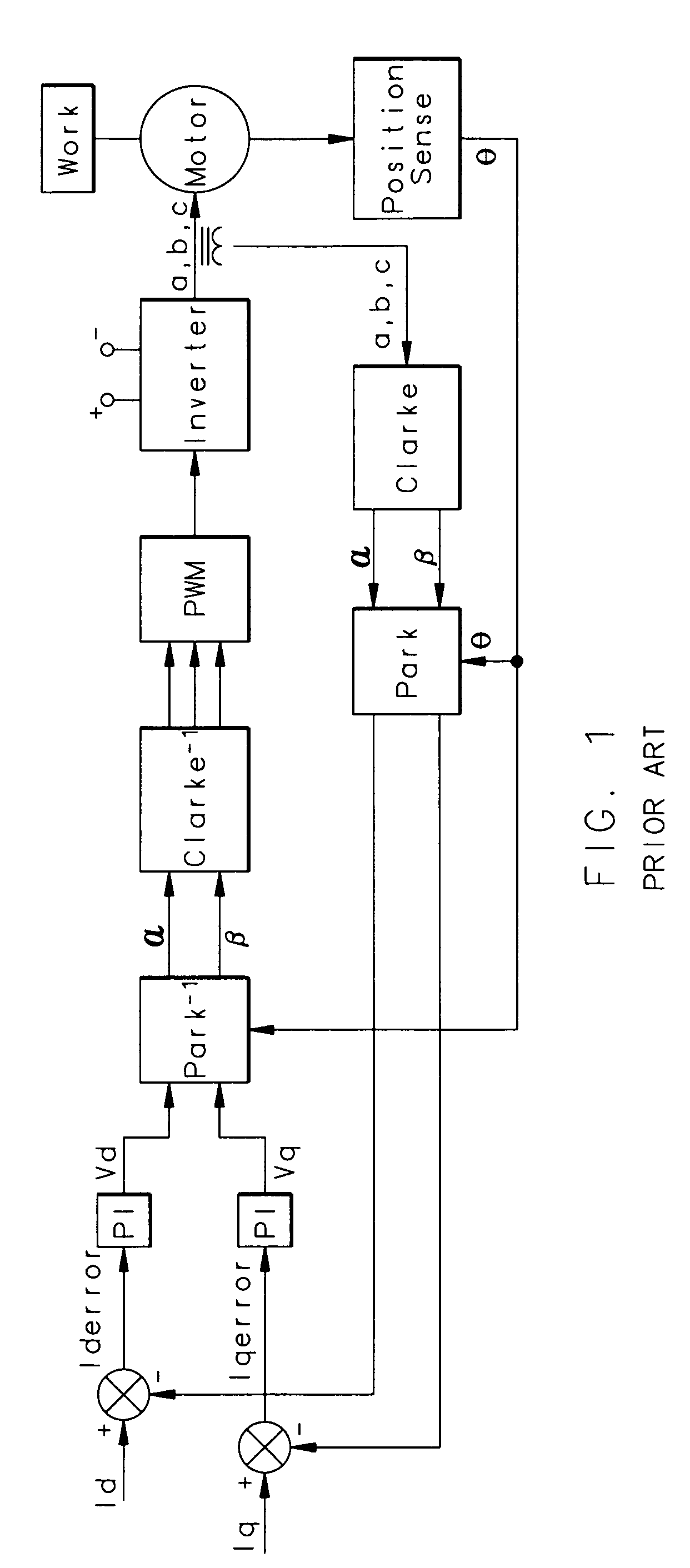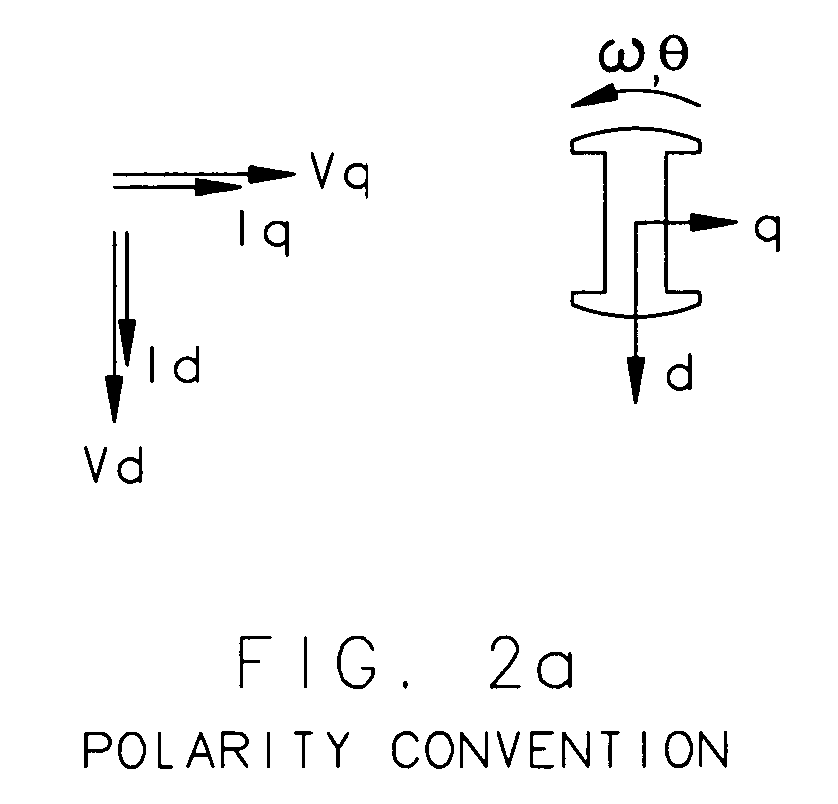Performance enhancement for motor field oriented control system
a technology of motor field and control system, applied in the direction of control system, dc motor speed/torque control, electrical apparatus, etc., can solve the problems of system providing substantial performance change, performance limitations at higher motor speeds, and interdependence of isub>q /sub>and isub>d /sub>control loops, etc., to achieve more robust and predictable control system, improve phase margin and stability, and limit the effect of “bandwidth”
- Summary
- Abstract
- Description
- Claims
- Application Information
AI Technical Summary
Benefits of technology
Problems solved by technology
Method used
Image
Examples
Embodiment Construction
[0037]FIG. 3 illustrates a disclosed control. The basic configuration of the conventional FOC algorithm is retained. However, an ARCTAN function (Tan−1) is added that provides a phase shifting angle in response to motor rotational speed (electrical frequency). Specifically, the ARCTAN function provides an angle precisely equal to the motor winding impedance angle. As can be appreciated from FIG. 3, the ARCTAN function receives the time derivative of the sensed angular position of the motor to determine the frequency, ω. This angle θc, output from the ARCTAN function, is used to rotate the inverse Park function (Park−1) alone (that is not the forward Park function) with a polarity such that as the motor impedance angle changes from zero to +90 degrees, the input angle θc to the Park−1 block will also change from 0 to +90 degrees. In this manner, the undesired effect of the motor impedance change over the operating speed range will be precisely eliminated. The end result is that for t...
PUM
 Login to View More
Login to View More Abstract
Description
Claims
Application Information
 Login to View More
Login to View More - R&D
- Intellectual Property
- Life Sciences
- Materials
- Tech Scout
- Unparalleled Data Quality
- Higher Quality Content
- 60% Fewer Hallucinations
Browse by: Latest US Patents, China's latest patents, Technical Efficacy Thesaurus, Application Domain, Technology Topic, Popular Technical Reports.
© 2025 PatSnap. All rights reserved.Legal|Privacy policy|Modern Slavery Act Transparency Statement|Sitemap|About US| Contact US: help@patsnap.com



